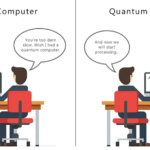The digital revolution, also known as the third industrial revolution, is a comprehensive overhaul of technology and society. A Close Look at Its History and Social Influence
Here is a wrap of the Digital RevolutionStarted in 1970 with developmentHistory during establishmentThe means to install this outfit beganInitial productsSmall wins and then failures at scaleFirst eyes on Admin dataChop-chopCopying AmazonNetflixAt USA TodayStarbucksLocalized messagingEditingStyleTesting disable people communityTranslating for Brazil, KoreaOne ambitious goal became clearGood bye BYRRCSUmmary
**1. **Early Beginnings:**
– **1950s:** Early electronic computers are where the digital revolution has its roots. The emergence of the transistor and later advances in integrated circuits made computers smaller, faster.
– **60’ler:** Modern internetin atası olan ARPANET’in kurulması ile dijital haberleşme ve ağları kullanma potansiyeli gösterildi.
**2. **Personal Computers:**
– 1970s-1980s: Personal computers (PC), including the Apple II in 1977 and IBM PC in 1981. Fostering computing to individuals/ small businesses. Operating systems like MS-DOS were introduced during this time and GUIs started to emerge.
**3. **The Internet Age:**
– **1990s**: The Web, introduced in the late 80’s by Tim Berners-Lee turned the Internet into an accessable information and communication medium. Then web browsers such as Netscape Navigator began appearing, putting the internet into general access.
**4. **Mobile and Social Media:**
The coming of smartphones led by the iPhone (2007) would change communication, computing and internet access in the 21st Century. Then, other social media platforms which could be activated by email like Facebook (2004) and Twitter (2006)get here to the online scene changing all that followed.
**5. The Age of Big Data and AI
-2010s-Present: The increased usage of big data analytics, artificial intelligence (AI), and machine learning as well revolutionized various fields including healthcare, finance and transportation. Digital innovation has been around for a while and with technologies such as cloud computing, Internet of Things (IoT), it is not only limited to the virtual world anymore.
Social Impact of the digital revolution
**1. **Communication:**
– **Immediate Communication:** Modern technology allows us to communicate thousands of miles around the world instantaneously via email, 03social media and messaging apps. This has enabled global collaboration and live interaction.
Social Media Impact: With the rise of social network platforms it turned up to be impossible to shrink from considering, sharing information coalescing with people being involved in mixed types for democratic deliberations and civic engagement. They have also been using as powerful weapon to mobilize social movements and opinions.
**2. **Economic Transformation:**
E-Commerce: Online shopping is now a key part of retail, changing the models and creating new economic opportunities.
– **Gig Economy:** The gig economy is a shift to freelance and short-term jobs, which has become more widespread with changes in the way work is done.[](https://www.brookings.edu/blog/the-avenue/2017/08/28/five-thoughts-from-experts-on-the-future-of-work-and-workers/)
**3. **Education and Learning:**
Information: The internet has made it easy to obtain knowledge and information from anywhere in the world.
Online Learning:Education has been revolutionized by e-learning platforms and massive open online courses (MOOCs) whichprovide anytime, anywhere learning opportunities,enabling access to educational content on a large scale.
**4. **Privacy and Security:**
Data Privacy: With the increasing prominence of digital technologies, data privacy as well as security concerns have been at forefront too since personal information is getting shared and stored online increasingly.
– Cybersecurity Threats: As cybercrime such as hacking, phishing and identiy theft has become more rampant it only makes sense that cybersecurity should be a top on the agenda.
**5. **Work and Employment:**
+ **Automation and AI:**.The general belief that Automation/AI technologies is just streamlining processes, increase in productivity but also truncated the possibility of replacements when it comes to jobs.
– Remote Work: The process of digitalization in communication has given way to remote work, which is impacting the dynamics and norms of traditional forms employment
**6. Cultural and Social*** Dynamics ***The 1970s in American Life*
– **Digitalize Culture:** New styles of cultural expression and ways that people interact have been formed in the digital age, including online gaming, virtual communities or even digital art.
– **Digital Divide:** However with all these advancements there is still a digital divide and this means that access to either technology or the internet can be unequal for different communities, has issues regarding opportunities and information due to limited budget of those unable to afford them.
### **Conclusion**
We are living in a different world today than we were 20 or even just ten years ago, thanks to the digital revolution that has changed virtually all parts of our lives. While its history supports what we know about the rapid evolution of technology and it’s subsequent integration into everyday life, equally important is evidence that underscores both the newfound conveniences & opportunities this technological transformation presents as well as potential challenges. The shape of society will always be associated with the development in technology—and therefore we as a species must adapt constantly, reflect continuously.
